Politicon.co
Syria: The Chessboard of U.S. and Russian Influence in the Middle East
During the Cold War era, Syria was a key ally of the Soviet Union, the principal rival of the United States. Syria served as the Soviet Union’s main strategic foothold in the Middle East and following the Cold War, further strengthened its ties with Russia, becoming one of the primary arenas of geopolitical rivalry between the U.S. and Russia. Syria thus played the role of a strategic outpost in Russia’s Middle Eastern policy.
In 2003 U.S. President George W. Bush identified Syria, along with Iran and North Korea, as part of the so-called "axis of evil" and threatened military intervention against these countries, particularly in response to Syria’s opposition to the Iraq invasion. Following the assassination of Lebanese Prime Minister Rafic Hariri in 2005, the Syrian government was held responsible, which led to the complete severance of diplomatic relations between the U.S. and Syria. However, thanks to intermediaries seeking to avoid further regional crises, tensions between the U.S. and Syria eased, and diplomatic relations were restored in 2009 as part of the Obama administration’s new foreign policy approach known as “Smart Power.”
The Arab Spring, which engulfed the Middle East in late 2010, increased the likelihood of intervention by the Obama administration. As unrest in Syria intensified, pressure from the United States on the Syrian regime grew. From the onset of popular protests against Bashar al-Assad, the U.S. government called for dialogue between the Syrian regime and opposition forces and urged the avoidance of the use of force. However, as the violence escalated, the issue was brought to the United Nations for discussion. In April 2011, a draft resolution condemning the Syrian government was introduced at the UN Security Council with U.S. support. Nevertheless, Russia and China vetoed the resolution. These countries continued to exercise their veto power on subsequent resolutions, thereby preventing their adoption.
Russia was prepared to deploy all available means to prevent the overthrow of its principal ally in the Middle East, Bashar al-Assad. For Russia Assad’s removal would have represented a failure of its Middle Eastern policy. At that time, Vladimir Putin, then serving as Prime Minister of Russia, articulated in a 2012 article that his country had two precise commitments in the Middle East:
- To defend Iran against any military actions targeted at it;
- To obstruct regime change and external pressures in Syria and other countries.
During the early years of the Syrian civil war, the United States adopted a relatively passive stance. This was primarily because the Obama administration viewed the Asia-Pacific region, rather than the Middle East, as the central arena for geopolitical power competition. Moreover, unlike the aggressive foreign policy of George W. Bush, Obama favored a political course based more on cooperation and international law. However, Vice President Joe Biden, who supported a more active foreign policy and military intervention, considered Russia to be the main adversary of the United States and viewed the developments in Syria as an opportunity to deprive Russia of its foothold in the Middle East.
The US’s pacifist position in Syria was disrupted when Bashar al-Assad used chemical weapons against civilians. Although limited, the possibility of US military intervention in Syria was brought to the forefront. However, Russia’s mediation led to the US abandoning this idea. Russia persuaded the Assad regime to agree to the removal and destruction of chemical weapons from Syria, thereby dissuading the US from considering military intervention.
The emergence of ISIS on the political stage, capitalizing on the power vacuum in Syria and Iraq, made US intervention in Syria unavoidable. Under Obama’s leadership the US military was authorized to strike ISIS targets in Iraq starting in August 2014, and in Syria from September 23, 2014. To gain military superiority in Syria the US began arming the PYD, the Syrian affiliate of the PKK, which provoked Turkiye’s objections. Additionally, the US decision to withdraw “Patriot” missile systems from Turkiye’s border with Syria exposed Turkiye to potential threats from Syria and simultaneously facilitated Russia’s intervention in Syria.
While the Syrian crisis was deepening, Russia annexed Crimea from Ukraine in 2014. This further escalated tensions in the international relations arena. Russia continued its geopolitical expansion by strengthening its forces and military presence at the Tartus Naval Base and the Latakia Air Base in Syria. On September 30, 2015 the Federation Council of Russia unanimously approved a decision for military intervention in Syria. From that date onward, Russia effectively entered the Syrian conflict through air operations. This marked the first Russian military deployment outside the borders of the former Soviet Union since Soviet troops withdrew from Afghanistan in 1989. While this military intervention was widely predicted to fail, it ultimately proved successful.
With Russia’s more active involvement in the Syrian crisis, the Assad regime and Iran’s influence were strengthened, while the Syrian opposition—considered US allies—and other regional actors, primarily Turkiye and Saudi Arabia, along with other Arab states, faced a difficult and complex process.Direct involvement in the Syrian conflict was a strategic and geopolitical victory for Russia. Through its military intervention in Syria, Russia:
- Rescued the Assad regime, thereby demonstrating its loyalty to its allies;
- Established itself as a military player in the Middle East, one to whom the US could no longer turn a blind eye;
- Secured its long-term presence in the Eastern Mediterranean;
- Strengthened its long-term partnership with Iran, an ally of the Assad regime;
- Forced the Gulf Arab states to reckon with Russia as a regional power broker.
Russia’s re-emergence in the power politics of the Middle East dramatically altered the geopolitical configuration that had arisen during its absence from the region following the Cold War. This was a direct refutation of the West’s wishful thinking that Russia would become bogged down in a military quagmire in Syria. Russia’s intervention in Syria was primarily aimed not just at supporting the Assad regime or countering US influence in the region, but also at securing its footholds in the Eastern Mediterranean, rather than seeking long-term solutions to the country’s internal divisions caused by the civil war.
In 2018, Idlib remained the last region in Syria under rebel control and all parties involved in the conflict began preparing for an inevitable confrontation. Given the government's capacity to concentrate its military forces on reclaiming a single remaining territory, along with its history of chemical weapons use, any offensive was expected to be met with strong resistance. Turkiye’s military presence in support of the rebels further guaranteed that any government assault would face significant pushback. Both Turkiye and the Syrian government began amassing troops near the borders. While Turkiye reinforced its forces within the province, Syrian and Russian warplanes bombed border towns.
Russia and Turkiye eventually agreed to establish a buffer zone between the rebel forces and the government troops. The agreement required the withdrawal of all heavy weaponry and fighters from a demilitarized zone spanning 15 to 20 kilometers. Both the Syrian government and major rebel groups, such as the Free Syrian Army, quickly accepted the buffer zone arrangement. Although groups like Hay’at Tahrir al-Sham (HTS), which adhere to an ideology aligned with al-Qaeda, also stated they would comply with the agreement, they remained unpredictable actors on the ground.
Throughout the conflict, Turkiye had largely avoided direct confrontation with the Syrian government. However, a government offensive in Idlib, backed by Russian airstrikes, led to significant Turkish casualties and prompted retaliatory military operations by Turkish forces. In late February 2020, dozens of Turkish soldiers were killed in an airstrike, and Turkiye responded by directly targeting Syrian military units, sharply escalating the conflict for a brief period. The confrontation quickly de-escalated after a ceasefire agreement was reached between Turkiye and Russia. In 2023, as the war drew to a close, the Arab League restored Syria’s membership in the organization.
Following a significant decline in international support for Syrian government forces, a new rebel offensive took place in 2024. Russia’s large-scale military intervention in Ukraine had already led to a reduction in its capacity to assist Syria. Another key ally of the Syrian regime, Iran, lost much of its regional maneuverability due to the Israel-Hamas war of 2024. Israeli strikes on Iran’s strategic assets and regional allies—particularly within Syria—significantly weakened Tehran’s ability to project power. One of the major components of Assad's fight against the rebels, the support of Hezbollah, was diminished as a result of Israel’s bombardment of Lebanon from September through November.
In October, Hezbollah withdrew its fighters from Syria to defend against a potential ground invasion in Lebanon. By the end of the fighting, over half a million Syrian refugees in Lebanon had returned to Syria. When a ceasefire between Israel and Hezbollah was announced on November 26, Hezbollah had agreed to significant concessions. The very next day, Hay’at Tahrir al-Sham (HTS) began advancing in the Idlib and Aleppo governorates. On November 29, HTS fighters entered the city center of Aleppo and forced government troops to retreat. The following day, Russian warplanes launched airstrikes against HTS, but the group continued its offensive and expanded its gains toward the Hama region over the next week. On December 7, the rebels captured Daraa and Homs, effectively encircling Damascus and severing the Syrian army’s access to bases and ports needed to reinforce and resupply the capital. That same day, rebel forces entered Damascus and seized control by nightfall. It was soon confirmed that President Assad had fled.
In January, HTS leader Ahmad al-Sharaa was officially declared interim president and de facto head of the provisional government. Al-Sharaa expressed his intent to implement a careful and comprehensive constitutional reform process over the coming years and called for the disarmament of all armed factions, including HTS, in favor of a unified national military. However, the extent to which HTS members had abandoned their ideological ties to al-Qaeda remained unclear—especially as the interim government quickly imposed certain conservative norms on schools and mosques.
Although the Syrian Government asserts that the majority of armed factions have now been consolidated under a unified command structure, multiple armed groups continue to operate within Syria. The faction formerly affiliated with Hay'at Tahrir al- Sham (HTS) remains the most prominent, exerting control over significant territory and holding key positions within the interim government, including the presidency and ministries such as Defence and Interior.
HTS, despite having formally disbanded, remains designated as a terrorist organisation by entities such as the United Nations, European Union, and United Kingdom. However, the United States revoked its classification of HTS as a foreign terrorist organisation in July 2025.
Other notable factions include the Turkish-supported Syrian National Army (SNA) and the Kurdish-led Syrian Democratic Forces (SDF), the latter of which continues to receive backing from the United States. The SDF has expressed criticism regarding the post-Assad political order and the current constitutional framework. Although it agreed in principle to join the new administration as of March, negotiations concerning the terms and timeline of integration are ongoing. In contrast, the SNA has formally committed to incorporation within the state’s armed forces. Throughout the course of the civil war, all three groups—HTS, SNA, and SDF—have faced allegations of human rights violations.
By early March, forces loyal to the interim government began a campaign of repression against Assad regime supporters in western Syria, particularly in regions predominantly populated by Alawites. Within four days, government forces killed over 1,000 people, the majority of whom were civilians.
The fall of the Assad regime brought the United States significant geopolitical dividends. Neither Russia nor Iran would retain strong influence in post-Assad Syria. Iran, which had long used Syria as a corridor to support proxy actors such as Hamas and Hezbollah, lost a critical strategic lever. Immediately following Assad's ouster, Israeli forces launched an operation to retake the remaining parts of the Golan Heights still under Syrian control.
Among the greatest beneficiaries of regime change in Syria was Turkiye. With the rise to power of factions supported by President Erdoğan’s government, Ankara expanded its strategic influence and room for maneuver in Syria.
By contrast, the biggest loser in the Syrian conflict was unquestionably Russia. Isolated from the international community and having lost one of its key regional allies, Moscow found itself in a weakened position in the Middle East’s power dynamics. Despite gaining ground in Ukraine at high cost, the Kremlin was forced to relinquish Syria in order to consolidate dominance in its near abroad. Though the Biden administration’s contest with Russia over power projection may have proven disastrous for Ukraine, it ultimately produced a major geopolitical victory for the United States.
Now, the U.S. faces a Russia that is exhausted and depleted from the war in Ukraine, stripped of its strategic presence in the Middle East, and with its influence largely confined to the post-Soviet space—a power defeated in the broader geopolitical contest. Attention can now be realistically shifted to China. The decision by Donald Trump, upon returning to power, to ease tensions with Russia and instead declare a “trade war” on China represents a logical continuation of that American strategic pivot.
Note: This article was prepared within the framework of the Politicon writing competition.
![]()
- TAGS :
- Middle East
- REGIONS :
- Middle East and North Africa

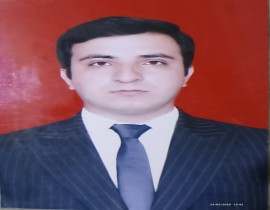
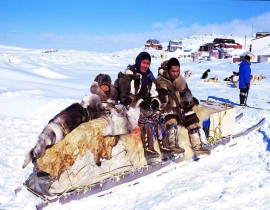
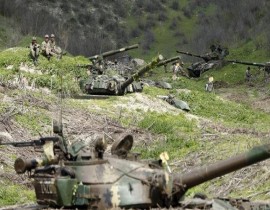

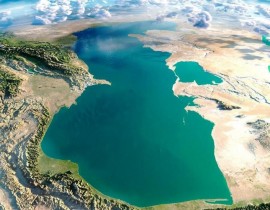
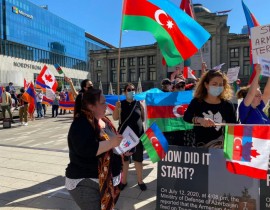


jpg-1599133320.jpg)

